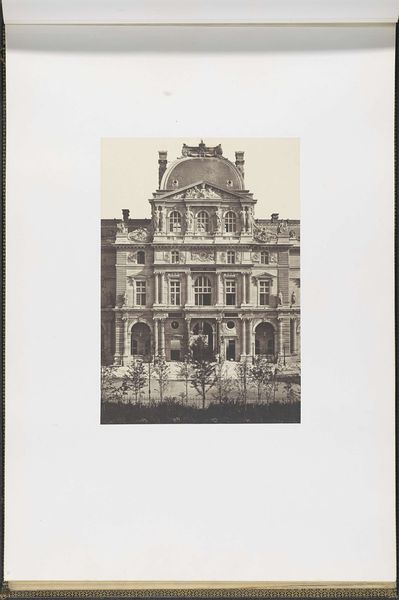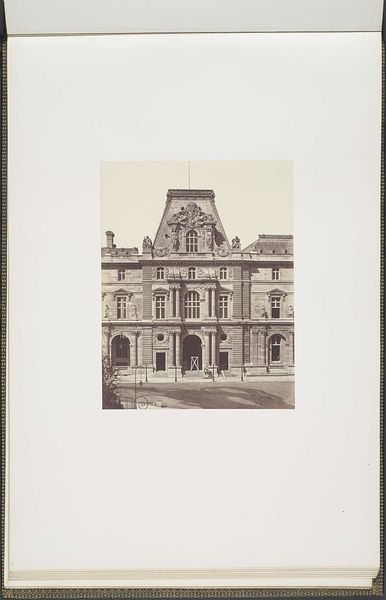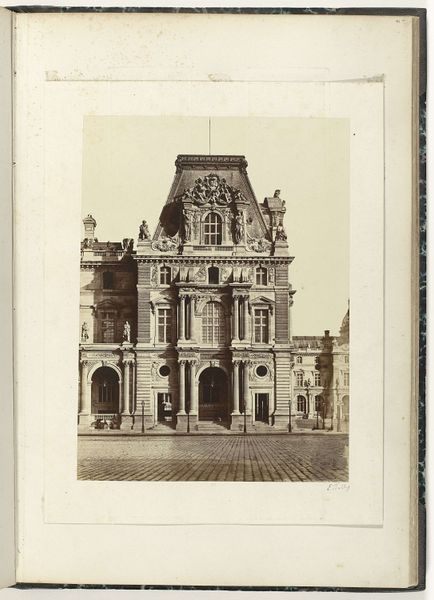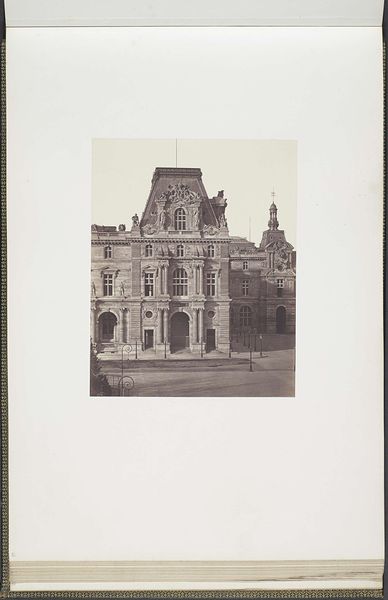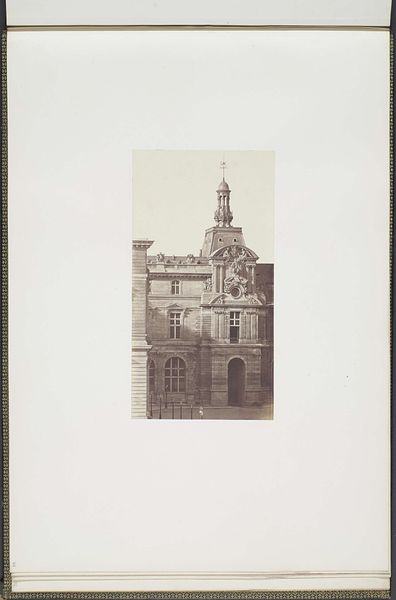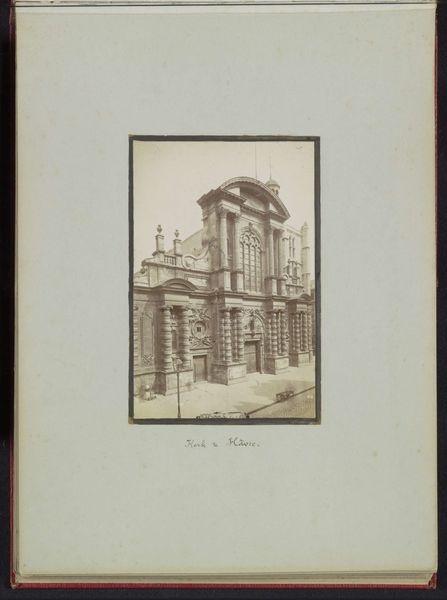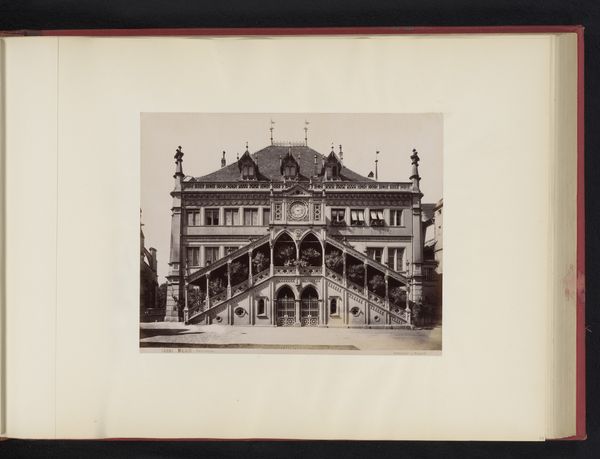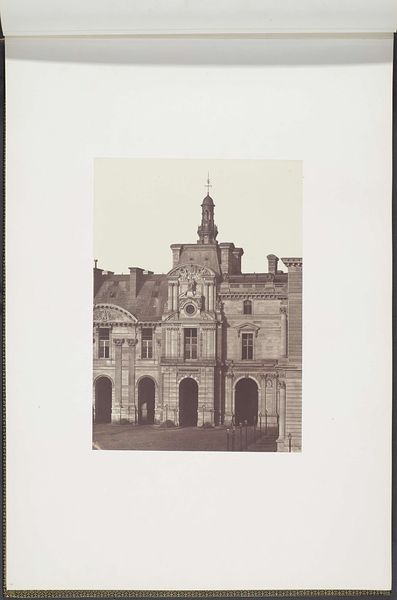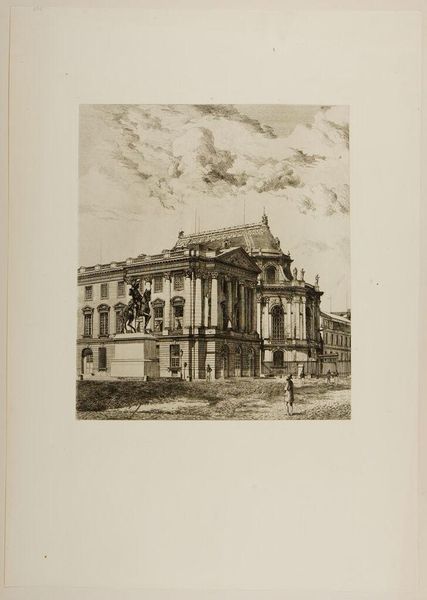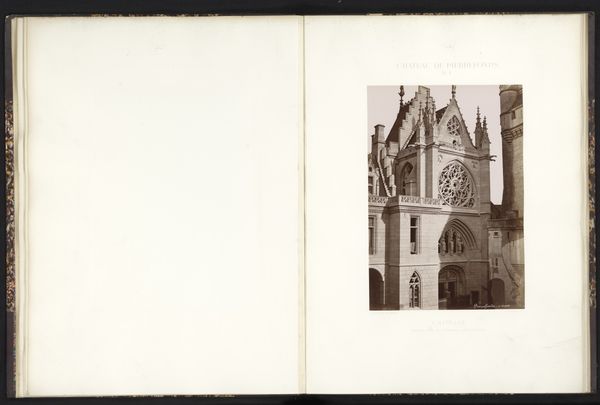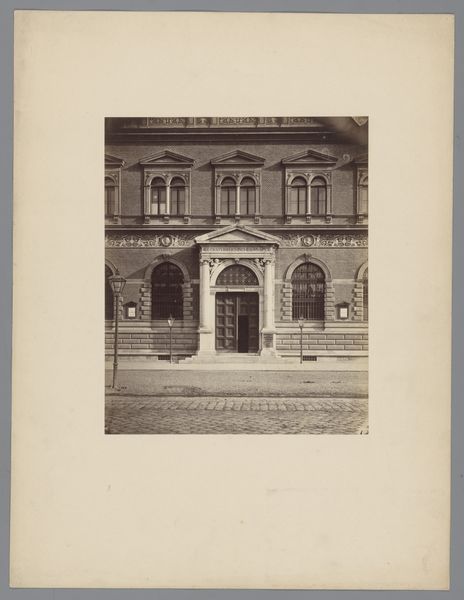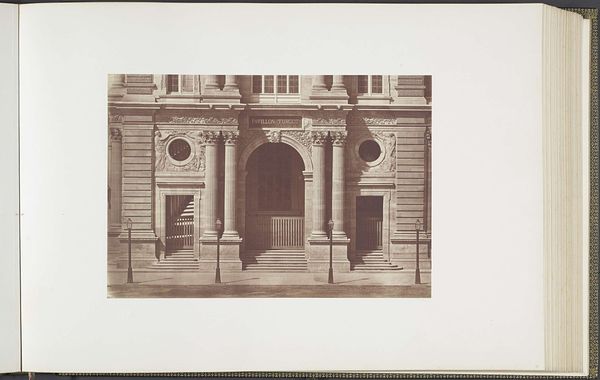
daguerreotype, photography
#
daguerreotype
#
photography
#
cityscape
#
academic-art
#
building
Dimensions: height 378 mm, width 556 mm
Copyright: Rijks Museum: Open Domain
Curator: Looking at Edouard Baldus’ daguerreotype, titled "Pavillon Richelieu in het Palais du Louvre," created around 1857 and currently held at the Rijksmuseum, I’m struck by the imposing nature of this view of the Louvre. Editor: It's awe-inspiring! The scale of the building, especially rendered in that rich sepia tone, lends it such a powerful, almost oppressive, sense of permanence. Those arches and the dome feel laden with history. Curator: Precisely. Baldus was commissioned to document public works in France during the mid-19th century. Photography, then a relatively new medium, became a tool for nation-building, showcasing architectural achievements and asserting imperial power. Think about how these images shaped perceptions of French progress. Editor: And I'm immediately drawn to the symbols built into the architecture itself. Look at the repeated classical motifs – the pilasters, the arched windows. They evoke a sense of Roman grandeur, tying the Louvre to a legacy of empire and authority. It's a visual language of power. Curator: It’s a conscious act of visual branding, linking Napoleon III's regime to the glory of the past. The Louvre, originally a fortress, transformed into a palace and then a museum, represents the evolving concept of public space and the control of cultural heritage. Editor: Also, the bareness of the plaza is worth mentioning. No bustling crowds, only a stark street, almost amplifying the monumentality. It’s an image meant to impress upon its viewers a feeling of absolute order and control. I almost sense a godlike power represented in this space. Curator: Right. Consider the image's role within the broader context of photographic surveys at the time. It not only documents architecture but also serves as a tool for political legitimization, reinforcing the idea of France as a center of art, culture, and power. Editor: Reflecting on this, Baldus’s image captures a fascinating tension, a static representation of a living space laden with political and symbolic intent. Curator: Indeed, and I find myself contemplating how, even now, this image shapes our understanding of 19th-century Paris and its ambition to solidify its imperial authority through artistic expression.
Comments
No comments
Be the first to comment and join the conversation on the ultimate creative platform.
